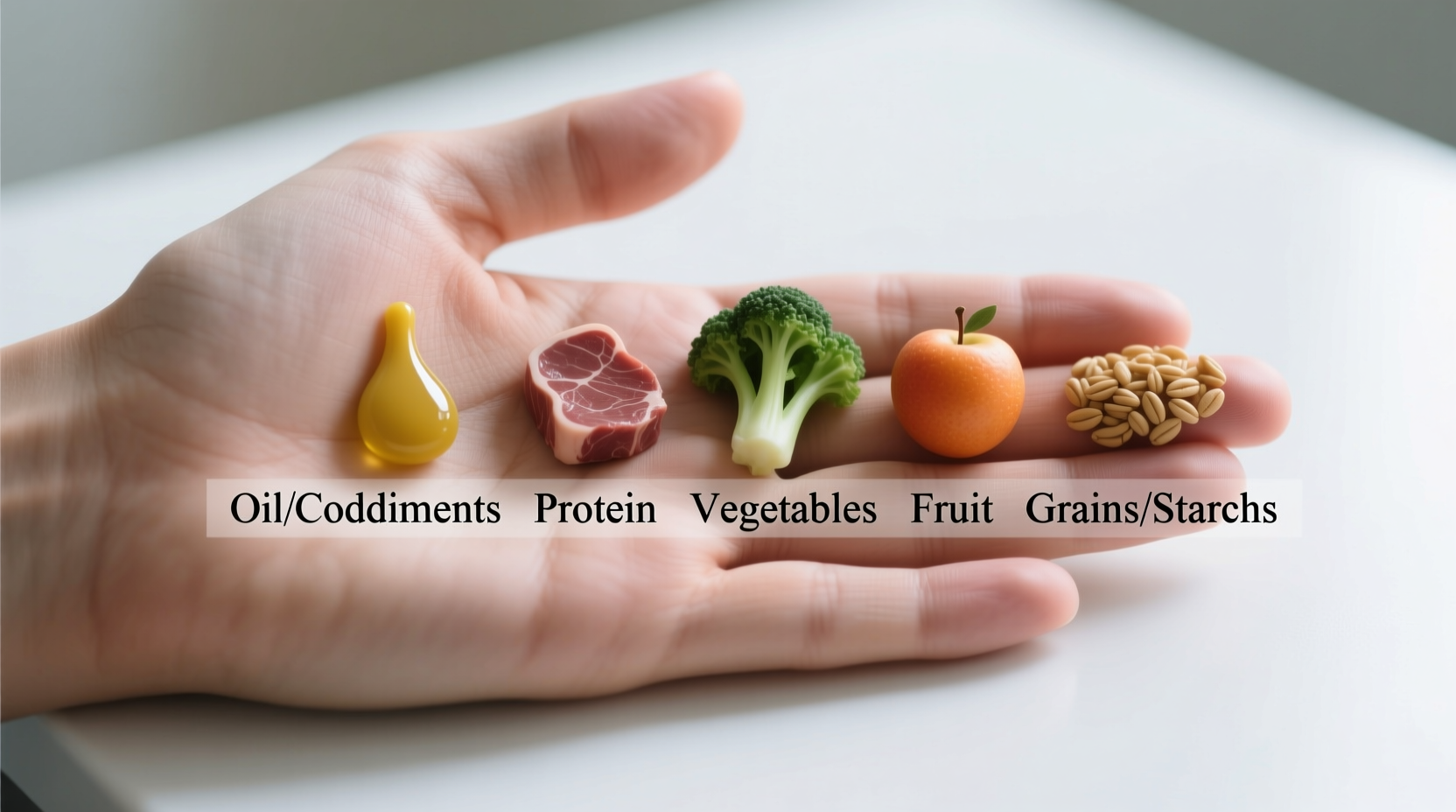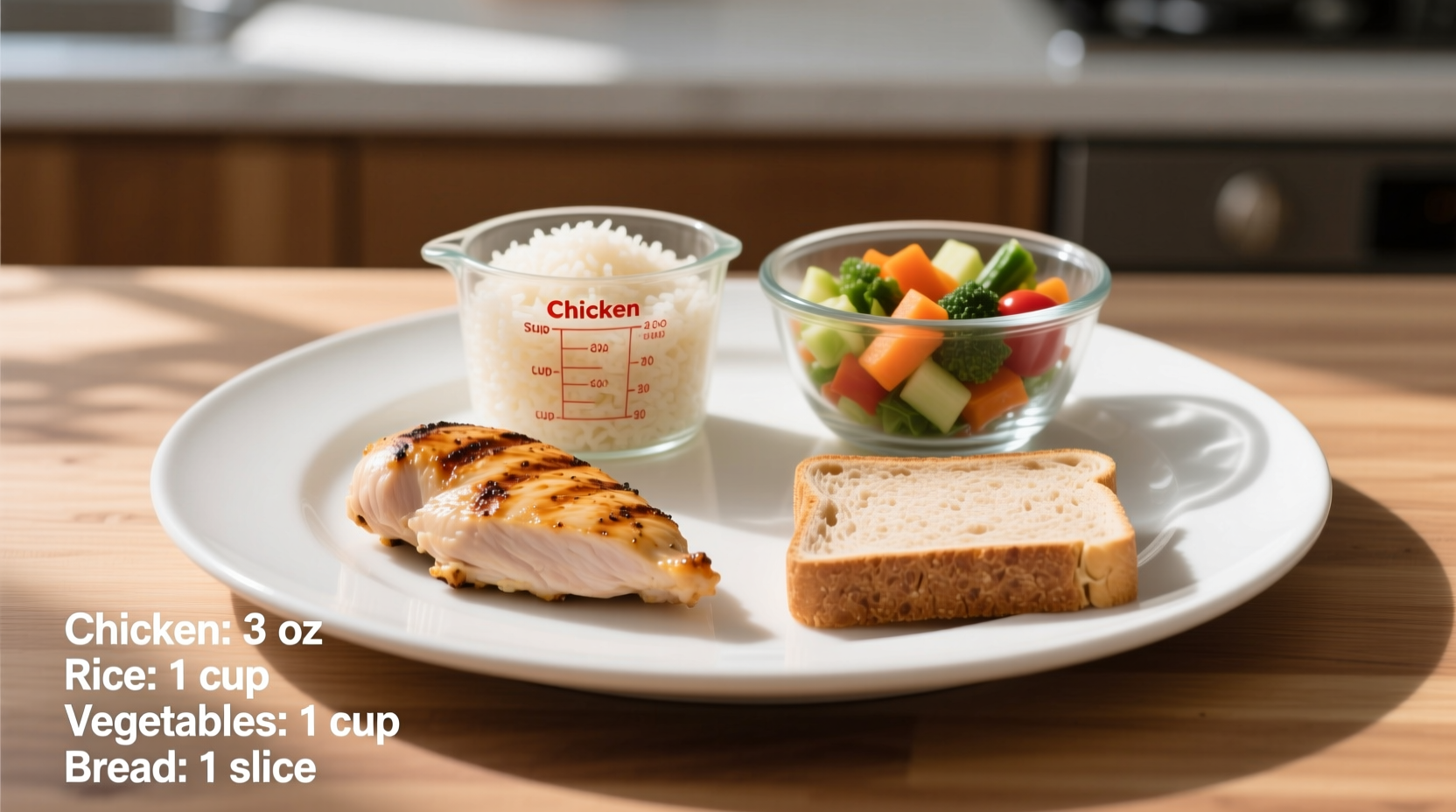Food portions refer to the specific amount of food you choose to eat at one time, whether in a restaurant, from a package, or prepared at home. Unlike standardized serving sizes defined by nutrition labels, portions are entirely within your control and directly impact your calorie intake and nutritional balance. Understanding proper portion sizes is essential for maintaining a healthy weight, managing chronic conditions, and ensuring balanced nutrition.
Ever wonder why you're still hungry after "one serving" of pasta or feel uncomfortably full after a "single portion" at a restaurant? You're not alone. Portion confusion affects millions of people trying to eat healthily. In this comprehensive guide, you'll discover exactly what food portions are, how they differ from serving sizes, and practical strategies to manage portions without constant measuring.
Portions vs. Servings: Clearing the Confusion
Many people use "portion" and "serving" interchangeably, but these terms have distinct meanings that significantly impact your eating habits:
| Term | Definition | Who Determines It | Consistency |
|---|---|---|---|
| Food Portion | The amount of food you choose to eat at one time | You (the eater) | Variable - changes based on your choices |
| Serving Size | Standardized amount used for nutrition labeling | Government regulations (FDA) | Fixed - consistent across products |
| Recommended Serving | Nutritional guideline for balanced eating | Dietary guidelines (USDA) | Guideline - varies by individual needs |
This distinction explains why restaurant "portions" have ballooned 2-5x larger since the 1980s while official "serving sizes" remain relatively stable. According to research from the Centers for Disease Control and Prevention, these enlarged portions contribute significantly to overeating in the United States.
The Visual Portion Guide: Measure Without Tools
You don't need scales or measuring cups to estimate proper portions. Registered dietitians commonly teach the "hand method" - using your own hand as a natural portion guide:
- Protein (chicken, fish, meat): Palm-sized portion (about 3-4 ounces) - roughly the size of your entire palm
- Carbohydrates (rice, pasta, grains): Cupped handful (about 1/2 cup cooked) - similar to your clenched fist
- Fats (nuts, oils, avocado): Thumb-sized portion (1 tablespoon) - matches the length and width of your thumb
- Vegetables: Two handfuls (about 2 cups raw) - fill both hands cupped together
This practical approach works because hand size correlates with body size - larger people naturally require slightly larger portions. A study published in the Harvard T.H. Chan School of Public Health found that visual estimation methods like this improved portion control adherence by 40% compared to relying solely on measuring tools.

Portion Guidelines by Food Group
Different food groups require different portion approaches. Here's what registered dietitians recommend for balanced eating:
Protein Portions
A standard protein portion equals 3-4 ounces cooked, equivalent to a deck of cards or your palm. This provides about 21-28 grams of protein. For plant-based proteins like beans or tofu, portions increase to 1/2 cup (about the size of a tennis ball) to achieve similar protein content.
Carbohydrate Portions
For grains and starchy vegetables, aim for 1/2 cup cooked (fist-sized). This equals approximately 15 grams of carbohydrates. Non-starchy vegetables like broccoli or spinach can be eaten in larger portions - up to 2 cups raw (two handfuls) for the same carbohydrate content.
Fat Portions
Fats require the most precision. One tablespoon of oil (thumb-sized) or 1/4 avocado contains about 14 grams of fat. Nuts and seeds should be limited to small handfuls (about 1/4 cup) as they're calorie-dense despite their nutritional benefits.
Why Portion Control Matters for Your Health
Proper portion management directly impacts several health outcomes:
- Weight management: Research shows that reducing portion sizes by just 20% can lead to significant weight loss over time without changing food quality
- Blood sugar control: Consistent carbohydrate portions help stabilize blood glucose levels, crucial for diabetes management
- Nutrient balance: Appropriate portions ensure you get adequate nutrients without overconsuming any single food group
- Digestive health: Proper portion sizes prevent overloading your digestive system, reducing discomfort and improving nutrient absorption
The 2020-2025 Dietary Guidelines for Americans emphasize that "portion control is one of the most effective strategies for achieving and maintaining a healthy weight." These guidelines provide science-based recommendations for healthy eating patterns across the lifespan.
Practical Portion Control Strategies
Implementing portion control doesn't require perfection. Try these evidence-based techniques:
Plate Method for Balanced Meals
Divide your plate visually:
- 1/2 plate: Non-starchy vegetables (broccoli, spinach, peppers)
- 1/4 plate: Lean protein (chicken, fish, beans)
- 1/4 plate: Whole grains or starchy vegetables (brown rice, sweet potato)
Restaurant Portion Management
Restaurant portions typically contain 2-3 times the recommended amount. Smart strategies include:
- Ask for a to-go container when your meal arrives and immediately portion half for later
- Share an entrée with a dining companion
- Order appetizer-sized portions instead of main courses
Smart Snacking Practices
Pre-portion snacks into single servings rather than eating from large containers. A study in the National Center for Complementary and Integrative Health found that people consumed 30% fewer calories when snacks were pre-portioned versus eating directly from large packages.
Avoiding Common Portion Pitfalls
Several environmental factors trick us into overeating. Being aware of these "portion distortions" helps maintain control:
- Plate size effect: Using larger plates makes portions appear smaller, leading to over-serving. Switch to 9-inch plates instead of 12-inch dinner plates
- Package size influence: Larger packages encourage more consumption. Buy single-serving packages or immediately divide bulk purchases
- Distraction eating: Eating while watching TV or working reduces awareness of fullness cues. Practice mindful eating by focusing solely on your meal
- Emotional eating: Stress and boredom often trigger overeating. Develop non-food coping strategies for emotional situations
Creating Sustainable Portion Habits
Successful portion control isn't about restriction—it's about awareness and balance. Start with these manageable steps:
- Week 1: Practice the hand measurement method for one meal daily
- Week 2: Implement the plate method for two meals per day
- Week 3: Measure restaurant portions by boxing half immediately
- Week 4: Apply portion principles to snacks and beverages
Remember that individual needs vary based on age, gender, activity level, and health conditions. The MyPlate guidelines from the USDA provide personalized recommendations based on your specific profile.
When to Consult a Professional
While general portion guidelines work for most people, certain situations warrant professional guidance:
- Managing diabetes or other metabolic conditions
- Significant weight loss or gain goals
- Eating disorders or complicated relationships with food
- Special dietary needs (pregnancy, athletic performance)
Registered dietitians can provide personalized portion plans that account for your unique health profile and goals.











 浙公网安备
33010002000092号
浙公网安备
33010002000092号 浙B2-20120091-4
浙B2-20120091-4